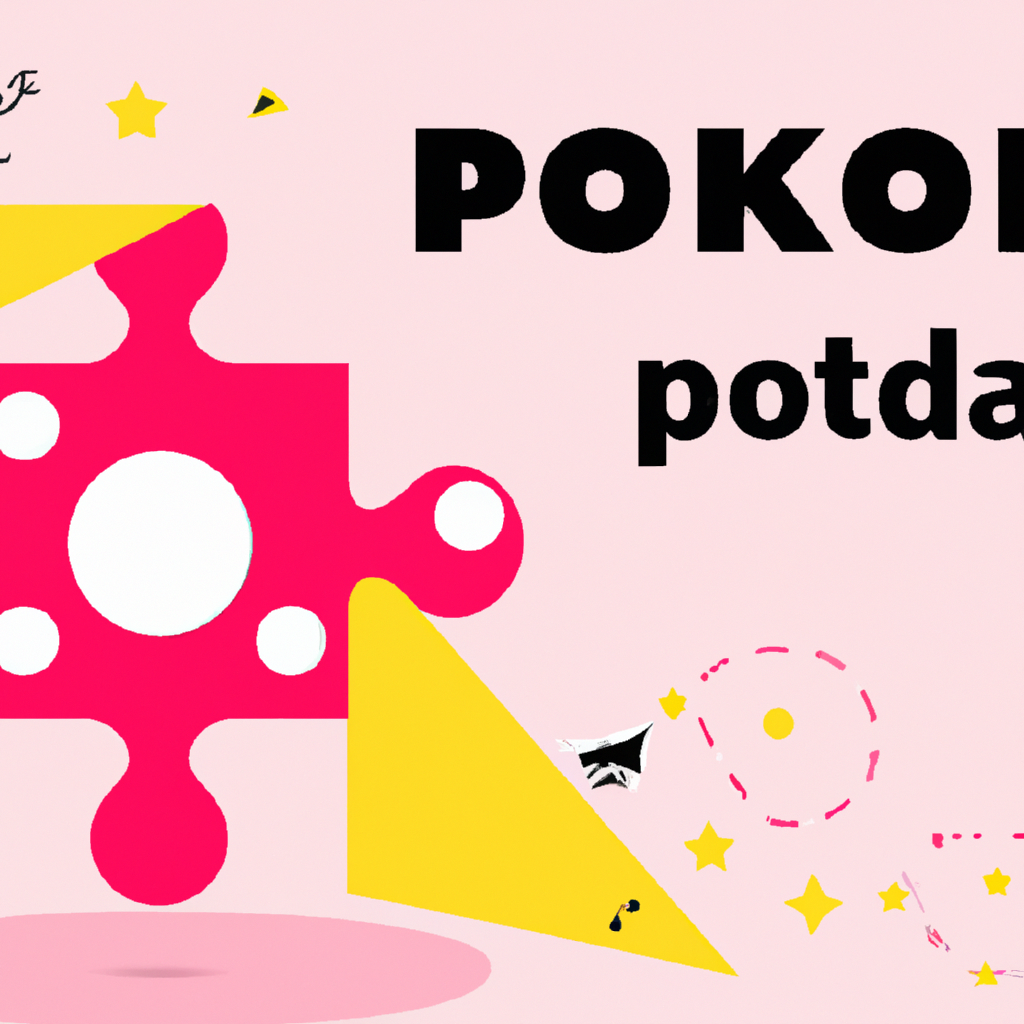Are you ready to discover the exciting world of Polkadot (DOT)? Get ready to explore a revolutionary blockchain platform that aims to connect multiple blockchains and enable them to communicate and share information seamlessly. With its unique design and innovative approach, Polkadot aims to address the scalability, interoperability, and governance challenges faced by the current blockchain ecosystem. Join us on this journey as we unravel the potential of Polkadot (DOT) and how it is poised to reshape the future of decentralized applications and blockchain technology.

What is Polkadot (DOT)?
Polkadot (DOT) is a multi-chain platform that enables different blockchains to operate together seamlessly. It is designed to overcome the limitations of existing blockchain networks and provide a scalable and interoperable solution for decentralized applications (dApps).
The Vision of Polkadot
The vision of Polkadot is to create a decentralized and interconnected web where multiple independent blockchains can communicate and share information securely. It aims to break down the silos of traditional blockchain networks and foster collaboration and innovation among different projects.
By enabling cross-chain communication and interoperability, Polkadot seeks to enable the transfer of assets and data across different blockchains, unlocking new possibilities for decentralized finance (DeFi), supply chain management, identity management, and many other sectors.
The Polkadot Network
The Polkadot network consists of a main blockchain called the Relay Chain, along with multiple connected blockchains known as Parachains. These Parachains can be customized according to the specific requirements of different projects, allowing for flexibility and specialization.
The Relay Chain serves as the backbone of the Polkadot network and is responsible for the consensus and security of the entire network. It coordinates the transactions and communication between Parachains, ensuring the integrity and validity of the overall system.
The DOT Token
The native cryptocurrency of the Polkadot network is called DOT. It plays a vital role in the governance and operation of the network.
DOT holders have the ability to participate in the governance of the network by voting on proposals and making decisions on important matters such as protocol upgrades and treasury management. This gives the community a say in the direction and development of the Polkadot ecosystem.
In addition to governance, DOT tokens are also used for staking. Staking involves locking up DOT tokens as collateral to secure the network and validate transactions. Stakers are rewarded with additional DOT tokens for their contributions to the network’s security and consensus.
How Does Polkadot Work?
Relay Chain
The Relay Chain acts as the central hub of the Polkadot network. It establishes the consensus and coordinates the communication between different Parachains. The Relay Chain utilizes a unique consensus algorithm called “Nominated Proof-of-Stake” (NPoS) which combines the benefits of both proof-of-stake and delegated proof-of-stake.
Under NPoS, DOT holders can nominate validators who will then be responsible for securing the network and validating transactions. Validators are chosen based on their reputation and the number of DOT tokens they hold or control through nominations.
Parachains
Parachains are independent blockchains that connect to the Polkadot network. They can be tailored to specific use cases or industries, allowing for specialization and innovation. Each Parachain operates its own consensus mechanism and has its own set of validators.
By connecting to the Polkadot network, Parachains benefit from the shared security and interoperability provided by Polkadot. They can communicate and interact with other Parachains, enabling the transfer of assets, data, and functionalities across various chains.
Bridges
Bridges are components that facilitate interoperability between Polkadot and other blockchain networks. They allow for the seamless transfer of assets and data between different chains, opening up opportunities for cross-chain communication and collaboration.
Bridges are crucial for achieving the vision of a truly interconnected web of blockchains. They enable projects built on different networks to leverage the benefits of Polkadot’s scalability and shared security, while also maintaining their connections to their respective ecosystems.
Governance
Governance in the Polkadot network is decentralized and community-driven. DOT token holders have the power to propose and vote on governance referenda, which include decisions related to protocol upgrades, treasury management, and the addition or removal of parachains.
This democratic governance model ensures that the Polkadot network evolves in a decentralized manner, with decisions made by the community that is directly invested in the ecosystem.
Advantages of Polkadot
Scalability
One of the key advantages of Polkadot is its scalability. By allowing multiple Parachains to run in parallel and process transactions simultaneously, Polkadot can handle a high volume of transactions, thereby avoiding congestion and high fees that are often associated with single-chain networks.
The scalability of Polkadot is further enhanced by its sharding mechanism, which separates network resources and processing power across different Parachains. This allows the network to scale horizontally, increasing its capacity to handle more transactions as the number of Parachains grows.
Interoperability
Interoperability is critical for the success of blockchain networks, and Polkadot aims to solve this challenge by providing a framework for seamless communication and interaction between different chains.
With Polkadot, assets and data can be transferred across chains, enabling collaboration and information sharing between projects. This interoperability unlocks new possibilities for cross-chain DeFi applications, supply chain management solutions, and other use cases that require the integration of multiple blockchains.
Shared Security Model
Polkadot’s shared security model enhances the overall security of the network. In a shared security model, all Parachains benefit from the security provided by the Relay Chain.
By connecting to the Relay Chain, Parachains leverage the collective security of the entire Polkadot network, making it more resilient to attacks. This shared security model reduces the security risks associated with individual blockchains and enhances the overall trust and confidence in the Polkadot ecosystem.
Upgradability
Polkadot’s architecture allows for easy upgradability and evolution of the network. Unlike traditional blockchain networks that require hard forks to implement major upgrades or changes, Polkadot can introduce new features and improvements through on-chain governance.
This means that the Polkadot network can adapt and innovate over time without disrupting the existing ecosystem. Upgrades can be proposed, discussed, and voted on by the community, enabling a more agile and decentralized approach to network development.
The Team Behind Polkadot
Polkadot is led by a team of experienced individuals who are passionate about pushing the boundaries of blockchain technology. Here are some key members of the Polkadot team:
Gavin Wood
Gavin Wood is one of the co-founders of Polkadot and the creator of the Substrate framework, which powers the development of Parachains on Polkadot. He has a background in computer science and was one of the original co-founders of Ethereum.
Wood’s vision and technical expertise have been instrumental in the development of Polkadot, and he continues to contribute to the project as a key figure in the blockchain industry.
Robert Habermeier
Robert Habermeier is another co-founder of Polkadot and has played a critical role in the design and development of the network. He is a renowned blockchain researcher and has contributed to various blockchain projects before co-founding Polkadot.
Habermeier’s deep understanding of blockchain technology and his passion for creating scalable, interoperable systems have been invaluable in shaping the vision and architecture of Polkadot.
Peter Czaban
Peter Czaban is the Head of Strategy at Web3 Foundation, the organization behind Polkadot. He has been involved in the blockchain industry for many years and has held various positions in different projects.
Czaban’s strategic insights and leadership have been instrumental in driving the growth and adoption of Polkadot. He is responsible for overseeing the overall strategy and partnerships of the project.
And the Web3 Foundation
The Web3 Foundation is a non-profit organization that supports the development and adoption of decentralized technologies, including Polkadot. It provides funding, grants, and resources to researchers, developers, and ecosystem builders to accelerate the growth of the Polkadot ecosystem.
The Web3 Foundation works closely with the Polkadot community to ensure the network’s decentralization and sustainability, and to foster innovation and collaboration among developers and projects.

DOT Tokenomics
Token Supply
The total supply of DOT tokens is fixed at 1 billion. However, not all tokens are initially in circulation. The token supply is inflationary, with new tokens being released into circulation through the network’s staking and governance mechanisms.
The inflation rate is determined by the on-chain governance process and can be adjusted by DOT holders through referenda. This ensures that the token supply remains dynamic and responsive to the needs and consensus of the community.
Token Distribution
The initial distribution of DOT tokens was carried out through a series of auctions known as the Polkadot Initial Parachain Offering (IPO). Participants in the auctions were able to acquire DOT tokens by making contributions in various cryptocurrencies.
A portion of the DOT tokens is allocated to the Web3 Foundation to support the development and growth of the ecosystem. The remaining tokens are distributed to early supporters, investors, and contributors to the project.
Staking and Governance
DOT tokens play a crucial role in the staking and governance mechanisms of the Polkadot network. DOT holders can stake their tokens to become validators or nominate validators to secure the network and validate transactions.
Validators and nominators are rewarded with additional DOT tokens for their contributions to the network’s security and consensus. These rewards incentivize token holders to participate in the network and contribute to its stability and operation.
Furthermore, DOT holders can actively participate in the governance of the Polkadot network. They have the power to propose and vote on governance referenda, making decisions on important matters that shape the future of the ecosystem.
Use Cases for Polkadot
Decentralized Finance (DeFi)
Polkadot provides a platform for building decentralized financial applications that can seamlessly interact with different blockchains. By enabling cross-chain communication and interoperability, Polkadot opens up opportunities for DeFi protocols to access a wider range of assets, liquidity, and user bases.
The scalability and shared security provided by Polkadot make it an ideal platform for building high-performance and secure DeFi applications. Polkadot’s interoperability also allows for the integration of different DeFi protocols and the creation of innovative financial products and services.
Cross-Chain Communication
Polkadot’s core value proposition lies in its ability to facilitate cross-chain communication and collaboration. It allows different blockchains to exchange assets, data, and functionalities, enabling projects to leverage the strengths of multiple chains and create more powerful and robust applications.
For example, a gaming application built on one Parachain can utilize the assets and identities from another Parachain, creating a seamless and immersive gaming experience. Cross-chain communication also enables the transfer of assets between different chains, making it easier for users to interact with different cryptocurrencies and blockchain networks.
Supply Chain Management
Supply chain management is an industry that can greatly benefit from blockchain technology. Polkadot’s interoperability and scalability make it suitable for building supply chain solutions that span multiple organizations and systems.
Using Polkadot, supply chain participants can securely and transparently track and verify the movement of goods, from production to distribution. The shared security model ensures that the data and transactions recorded on the blockchain are trustworthy and cannot be tampered with.
Identity Management
Identity management is another area where Polkadot’s capabilities can be leveraged. Polkadot’s cross-chain communication and shared security model enable the creation of decentralized identity systems that can authenticate and validate user identities across different blockchains.
By integrating different identity systems, Polkadot allows users to have a single, portable identity that can be used across multiple decentralized applications. This reduces the need for multiple account registrations and enhances user privacy and control over their personal data.

Projects built on Polkadot
Acala Network
Acala Network is a decentralized finance (DeFi) hub built on Polkadot. It aims to provide a full suite of financial primitives, including stablecoins, decentralized lending and borrowing, staking, and governance.
By leveraging Polkadot’s interoperability and scalability, Acala Network aims to create a decentralized and open financial system that is accessible to anyone, anywhere. It focuses on providing stable and reliable financial tools for individuals and businesses to effectively manage their assets and participate in the DeFi ecosystem.
Chainlink
Chainlink is a decentralized oracle network that connects smart contracts on different blockchain networks to real-world data and external APIs. By integrating with Polkadot, Chainlink makes it easier for developers to access and use external data in their decentralized applications.
Through the integration of Chainlink’s oracles, Polkadot projects can securely and reliably interact with off-chain data sources, enabling the creation of more sophisticated and data-driven applications.
Plasm Network
Plasm Network is a scalable smart contract platform built on Polkadot. It aims to provide developers with an environment to build decentralized applications (dApps) that can take advantage of Polkadot’s scalability and interoperability.
By utilizing Polkadot’s shared security model, Plasm Network offers a high level of security for dApps built on its platform. It also provides tools and frameworks to simplify the development process and facilitate the adoption of blockchain technology.
Moonbeam
Moonbeam is a smart contract platform that brings Ethereum compatibility to Polkadot. It allows developers to build decentralized applications using the familiar Solidity programming language and existing Ethereum tooling.
By providing Ethereum compatibility, Moonbeam makes it easier for developers to migrate or build new applications on Polkadot without having to learn new programming languages or tools. This reduces the barriers to entry and fosters the growth of the Polkadot ecosystem.
Competition for Polkadot
Ethereum
Ethereum is the leading blockchain platform for decentralized applications and smart contracts. It has a large developer community and a wide range of applications built on its network. However, Ethereum faces scalability issues and high transaction fees, which Polkadot aims to address.
Polkadot’s scalability, interoperability, and shared security model position it as a strong competitor to Ethereum. It offers a more efficient and scalable platform for developers to build and deploy applications, and its interoperability allows for seamless integration with other blockchains.
Cardano
Cardano is a blockchain platform that aims to provide a secure and scalable infrastructure for the development of decentralized applications and smart contracts. It adopts a layered architecture and a proof-of-stake consensus mechanism.
Cardano and Polkadot share similar goals of scalability and interoperability. While Cardano focuses on scalability through its layered approach, Polkadot achieves scalability by connecting multiple Parachains. Both projects offer unique solutions to the challenges of existing blockchain networks.
Cosmos
Cosmos is a network of interconnected blockchains that aims to enable the transfer of assets and data across different chains. It utilizes a hub-and-spoke architecture to facilitate cross-chain communication and interoperability.
Like Polkadot, Cosmos provides a solution for the interoperability of blockchains. However, the two projects differ in their approach. While Cosmos uses bridge connectors to establish communication between chains, Polkadot connects blockchains through its Relay Chain architecture.
Binance Smart Chain
Binance Smart Chain (BSC) is a blockchain platform built by the Binance cryptocurrency exchange. It aims to provide a high-performance and low-cost environment for decentralized applications and DeFi protocols.
BSC and Polkadot target similar use cases, such as DeFi and decentralized applications. While BSC focuses on low-cost transactions and fast confirmations, Polkadot offers scalability, interoperability, and a shared security model. The choice between the two platforms depends on the specific requirements of the project and the trade-offs that developers are willing to make.

Potential Risks and Challenges
Security Concerns
As with any blockchain network, security is a critical concern for Polkadot. The shared security model introduces dependencies on the Relay Chain, and any vulnerabilities or attacks on the Relay Chain could have implications for all connected Parachains.
To mitigate security risks, Polkadot continuously conducts thorough audits and tests and encourages third-party security experts to review the network’s code and architecture. Ongoing research and development efforts are focused on improving the security and resilience of the network.
Dependence on Parachains
Polkadot’s performance and success are dependent on the availability and performance of the connected Parachains. If a Parachain experiences technical issues or fails to meet performance expectations, it could impact the overall network’s scalability and functionality.
To address this challenge, Polkadot encourages a diverse ecosystem of Parachains, each with its own unique use case and value proposition. This mitigates the risk of over-reliance on a single Parachain and ensures a more robust and resilient network.
Regulatory Uncertainty
The evolving regulatory landscape surrounding cryptocurrencies and blockchain technology is a potential challenge for Polkadot and other blockchain projects. Uncertainty and changes in regulations could impact the adoption and development of decentralized applications and could pose risks to the Polkadot ecosystem.
To navigate regulatory challenges, Polkadot and its community actively engage with lawmakers, regulators, and industry bodies to promote a better understanding of the technology and advocate for favorable regulations.
Market Competition
The blockchain industry is highly competitive, with many projects vying for market share and developer attention. Polkadot faces competition from established platforms like Ethereum, as well as emerging platforms like Cardano and Cosmos.
To differentiate itself and maintain its competitive advantage, Polkadot needs to continue delivering on its promises of scalability, interoperability, and security. By fostering a vibrant and innovative ecosystem, Polkadot can attract developers, projects, and users, ensuring its continued growth and success.
Future Outlook for Polkadot
Adoption and Growth
Polkadot has already gained significant traction since its launch. The network has attracted a diverse range of projects, including decentralized finance protocols, gaming platforms, and supply chain solutions.
As more projects and developers recognize the benefits of Polkadot’s scalability, interoperability, and shared security, adoption is likely to increase. This will further strengthen the network’s value proposition and position Polkadot as a leading blockchain platform.
Integration with Existing Systems
Polkadot’s ability to integrate with existing blockchain networks, such as Ethereum, opens up opportunities for collaboration and synergy between different ecosystems. This integration allows projects to leverage the strengths of multiple platforms and create more powerful and innovative applications.
The seamless transfer of assets and data between Polkadot and other networks also encourages interoperability and cross-chain communication, driving the adoption of blockchain technology in various industries.
Emerging Use Cases
As the Polkadot ecosystem matures, new and innovative use cases are expected to emerge. The scalability, interoperability, and governance features of Polkadot enable the development of applications in areas such as decentralized governance, digital identity, and cross-industry collaborations.
By providing a flexible and customizable infrastructure, Polkadot empowers developers to explore new frontiers and unlock the potential of decentralized technology in previously untapped sectors.
Evolution of the Polkadot Network
Polkadot is an evolving project with ongoing research and development efforts. The network is constantly being upgraded and refined to improve performance, security, and functionality.
As the technology advances, new features and capabilities will be introduced to enhance the user experience and expand the possibilities of the Polkadot ecosystem. The community-driven governance model ensures that decisions on upgrades and improvements are made in a decentralized and transparent manner, keeping the network agile and adaptable to the evolving needs of its users.
In conclusion, Polkadot is a groundbreaking blockchain platform that aims to revolutionize the way different blockchains interact and collaborate. With its scalability, interoperability, shared security model, and strong community, Polkadot is well-positioned to drive the adoption of blockchain technology and pave the way for a decentralized and interconnected future.


